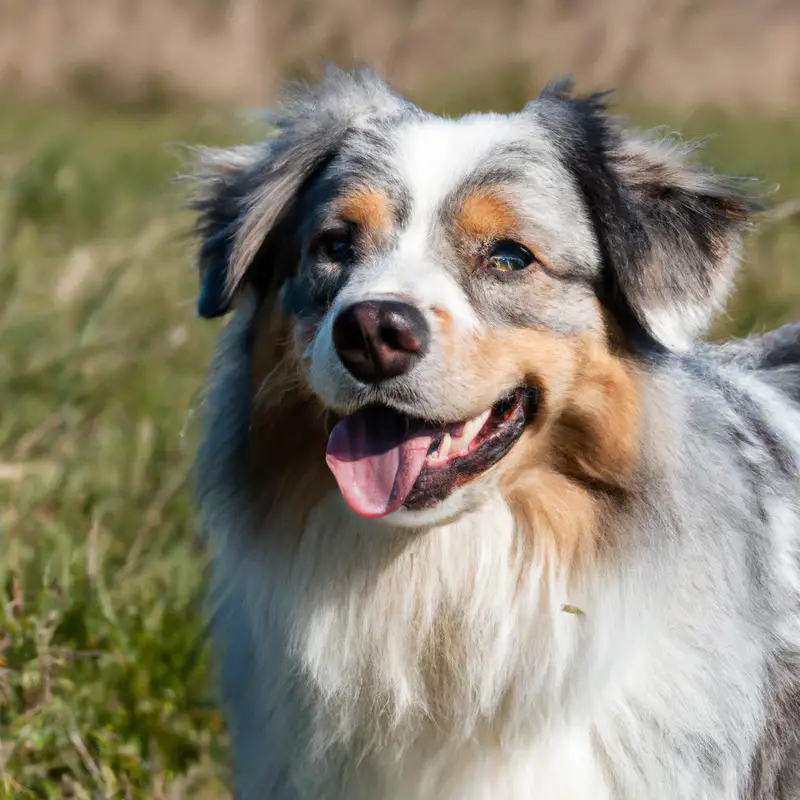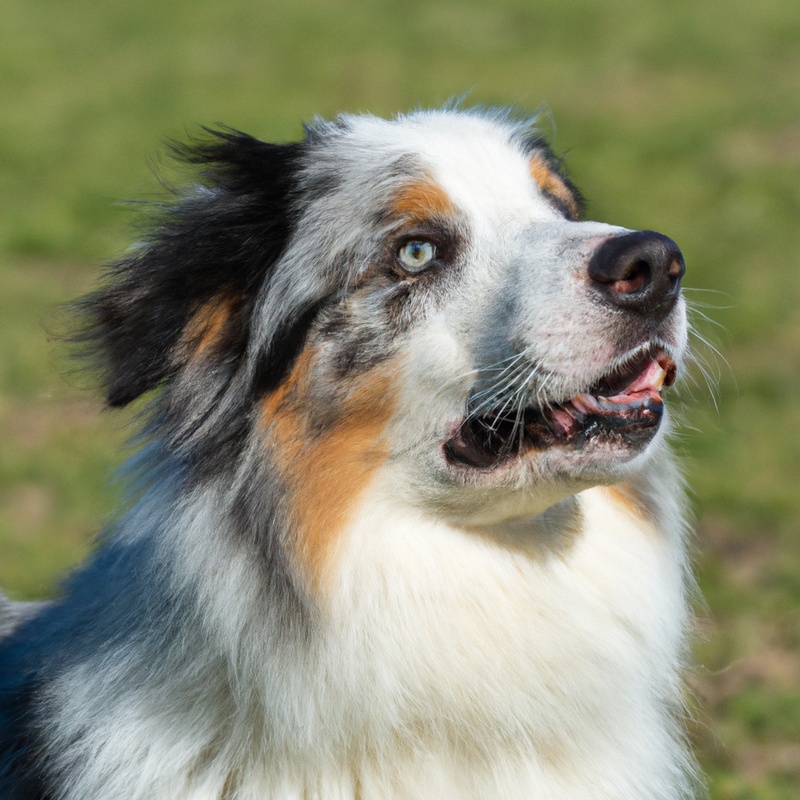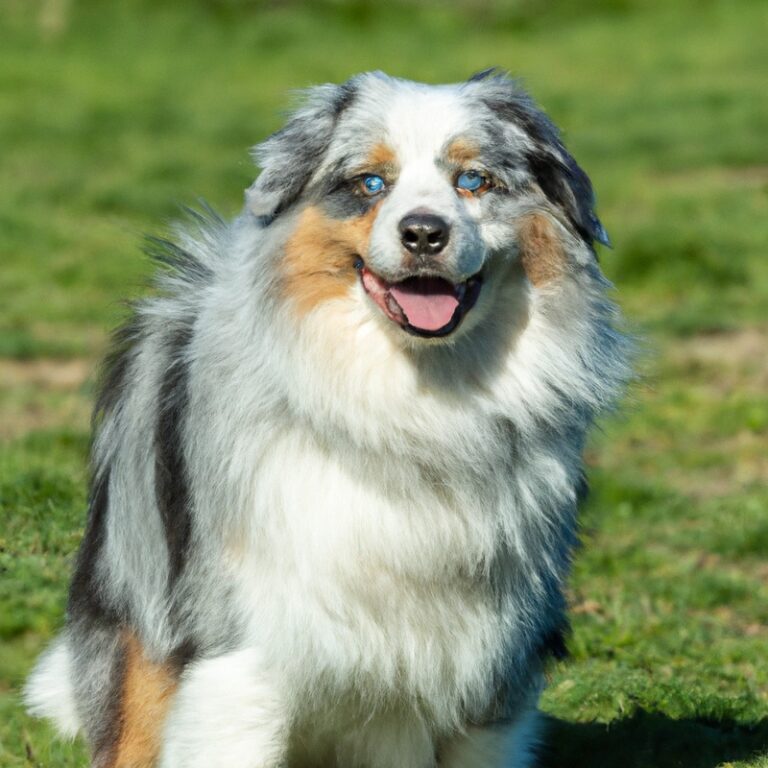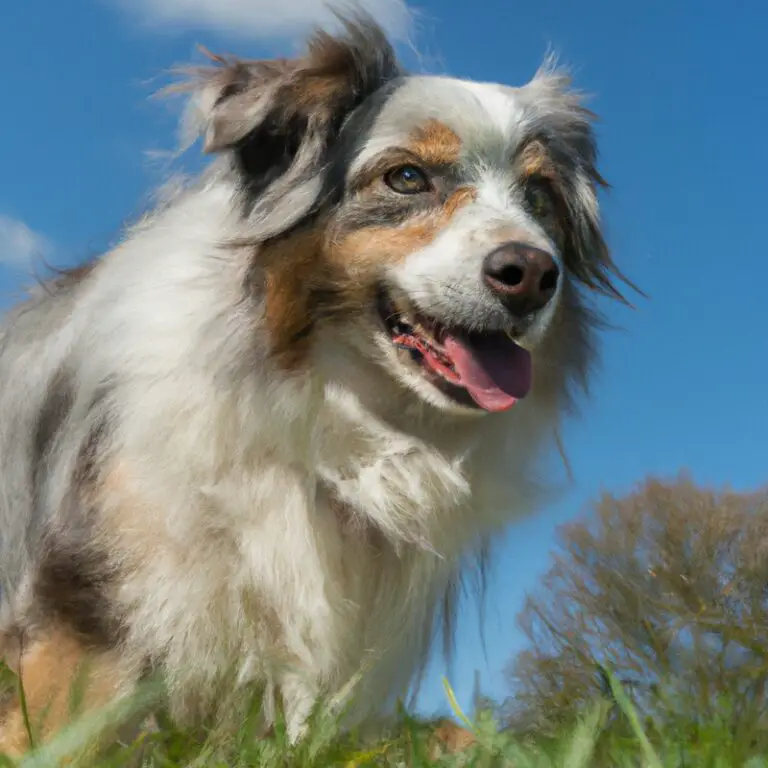How Do Australian Shepherds Handle Being Left Alone In a Dog Run?
Key Takeaways:
- Australian Shepherds can handle being left alone in a dog run for moderate periods of time.
- Providing mental stimulation and exercise can help Australian Shepherds cope with being left alone in a dog run.
- Australian Shepherds may experience anxiety or develop destructive behaviors if left alone in a dog run for long periods of time.
- Proper training and a comfortable environment are essential for Australian Shepherds when left alone in a dog run.
Have you ever wondered how Australian Shepherds handle being left alone in a dog run? As a lifelong dog lover and proud Australian Shepherd owner, I understand the concerns and challenges that come with leaving these intelligent and active dogs alone.
In this article, I will delve into the unique behavior of Australian Shepherds when left alone, the importance of socialization, common behavioral issues that may arise, and steps you can take to create an ideal dog run environment.
Additionally, I’ll provide tips on preparing your Australian Shepherd for alone time, managing their alone time effectively, and exploring alternative options. Whether you’re a current Australian Shepherd owner or considering bringing one into your life, this article will provide valuable insights to ensure your furry friend stays happy and content in their dog run.
Let’s dive in!
| Pros | Cons |
| 1. Australian Shepherds are generally active and energetic dogs, so having a dog run can provide them with ample space to burn off their energy. | 1. Australian Shepherds are known to be prone to separation anxiety, and being left alone in a dog run for extended periods can exacerbate this issue. |
| 2. A dog run can provide a safe and secure area for Australian Shepherds to play and explore without the risk of them wandering off or getting into trouble. | 2. Without proper mental stimulation and social interaction, Australian Shepherds may become bored and frustrated when left alone in a dog run. |
| 3. Being in a dog run can help Australian Shepherds develop independence and confidence, as they have the freedom to explore and entertain themselves. | 3. If not properly fenced or secured, Australian Shepherds may attempt to escape from the dog run, leading to potential accidents or harm. |
| 4. Having a dog run can be a great solution for Australian Shepherd owners who work long hours or have other commitments, as it provides a safe and controlled environment for the dog when they are not present. | 4. Australian Shepherds are a highly intelligent and active breed that requires mental stimulation and regular exercise. Being left alone in a dog run for extended periods may not meet their exercise and mental needs. |
Understanding Australian Shepherds’ behavior when left alone
The nature of Australian Shepherds as a breed
Australian Shepherds are known for their energetic and active nature. They are highly intelligent and require mental and physical stimulation to prevent boredom.
This breed is typically loyal, affectionate, and eager to please their owners.
Australian Shepherds are known for their herding instincts, which may manifest in their behavior. They often excel in activities that require agility and problem-solving skills.
However, Australian Shepherds can be prone to separation anxiety if not properly socialized and trained.
It’s important to meet their exercise needs and provide them with mental stimulation to help them thrive.

The importance of socialization for Australian Shepherds
Socialization plays a vital role in the development of Australian Shepherds. It helps them build confidence, learn appropriate behavior, and develop social skills.
Through exposure to various people, animals, sounds, and environments, they become well-rounded and adaptable companions.
Socialization also helps prevent behavior problems such as fearfulness or aggression. Regularly exposing your Australian Shepherd to new experiences and positive interactions from a young age is key.
It’s important to make socialization a fun and positive experience, ensuring they have a solid foundation for a happy and well-adjusted adulthood.
Common behavioral issues when Australian Shepherds are left alone
When Australian Shepherds are left alone, they can sometimes experience behavioral issues. Some common problems include separation anxiety, excessive barking, destructive chewing, and digging.
Separation anxiety is a major concern, as Australian Shepherds are known to be highly bonded with their owners and may become anxious or distressed when left alone.
This can lead to behaviors such as excessive barking, destructive chewing, and digging in an attempt to seek attention or alleviate their anxiety. It’s important to address these issues through training, socialization, and providing mental stimulation to help them feel more comfortable and secure when left alone.
Creating an ideal dog run environment for Australian Shepherds
Designing a spacious and secure dog run
When designing a spacious and secure dog run for your Australian Shepherd, there are a few key elements to consider. Firstly, the size of the dog run should be large enough for your Australian Shepherd to move around comfortably and stretch their legs.
A dog run that is too small can lead to boredom and frustration.
Secondly, it’s important to ensure that the perimeter of the dog run is secure and escape-proof. This means using sturdy fencing materials that your Australian Shepherd cannot chew through or jump over.
It’s also a good idea to bury the fencing underground to prevent digging.
Additionally, providing shelter within the dog run is essential. This could be a sturdy dog house or a covered area that protects your Australian Shepherd from the elements.
It’s important to have shade during hot weather and protection from rain or snow.
Lastly, consider the terrain of the dog run. A mix of grass and other surfaces like wood chips or gravel can provide sensory stimulation for your Australian Shepherd’s paws.
Make sure there are no sharp objects or hazards that could cause injury.
By keeping these factors in mind when designing a spacious and secure dog run for your Australian Shepherd, you can create a safe and enjoyable environment for them to exercise and relax in.

Providing mental stimulation and entertainment
When it comes to providing mental stimulation and entertainment for Australian Shepherds in a dog run, it’s important to keep their active minds and bodies engaged. Here are some tips:
- Interactive toys: Provide toys that challenge their problem-solving skills, such as treat balls or puzzle toys.
- Agility equipment: Set up some agility equipment like hurdles or tunnels to keep them physically and mentally stimulated.
- Training sessions: Use the time in the dog run to work on new commands and tricks, keeping their minds focused and engaged.
- Scent enrichment: Hide treats or toys around the dog run so that they can use their sniffing abilities to find them.
- Rotating toys: Switch out their toys regularly to keep them interested and prevent boredom.
Remember, every Australian Shepherd is unique, so try different activities to find out what your individual dog enjoys the most.

Incorporating comfort and relaxation areas
Creating comfort and relaxation areas in your dog run is essential for Australian Shepherds to feel calm and content when left alone. Here are a few simple ways to incorporate these areas:
- Provide cozy bedding: A soft and comfortable bed or mat will give your Australian Shepherd a designated spot to relax and unwind. Make sure it’s placed in a shaded area to keep them cool during hot weather.
- Offer shelter: Having a sheltered area in the dog run is important to provide protection from rain, wind, or excessive sun exposure. A simple doghouse or covered area will give your pup a safe retreat.
- Include calming scents: Australian Shepherds respond well to soothing scents like lavender or chamomile. Consider using natural calming sprays or diffusers to create a relaxing atmosphere.
- Add toys for mental stimulation: Including toys that promote mental stimulation, such as puzzle toys or treat dispensers, will help keep your Aussie entertained while they relax in their designated area.
- Provide access to fresh water: Keeping your dog hydrated is crucial for their well-being. Make sure to provide fresh water in a spill-proof bowl within easy reach of their relaxation area.
By incorporating these simple elements, you can create a comfortable and relaxing environment for your Australian Shepherd in their dog run. Remember to regularly check and maintain these areas to ensure their maximum comfort.
Preparing Australian Shepherds for being alone in a dog run
Gradual desensitization to being alone
When it comes to helping Australian Shepherds adjust to being alone in a dog run, gradual desensitization is key. This process involves slowly increasing the amount of time they spend alone, starting with short periods and gradually working up to longer stretches.
By doing this, you’re helping them become more comfortable and confident when left alone.
Remember to provide mental stimulation and comfort in the dog run to make the experience more enjoyable for your furry friend. Positive reinforcement training and consistency are also important in building trust and independence.
Positive reinforcement training for independence
Positive reinforcement training is a great approach to help Australian Shepherds become more independent and comfortable being alone in a dog run. The key is to reward and reinforce desired behaviors that promote independence.
Start by gradually increasing the time your Australian Shepherd spends alone in the dog run.
Begin with short intervals and gradually extend the duration over time. Each time your dog remains calm and relaxed, reward them with treats, praise, or playtime.
This positive reinforcement will help your dog associate being alone with positive experiences.
Another important aspect of positive reinforcement training is teaching your Australian Shepherd “stay” and “down” commands. This will give them a sense of control and help them understand that staying calm and in a specific spot is rewarding.
Practice these commands regularly in different environments to ensure your dog understands and follows them consistently.
Consistency and patience are key when it comes to positive reinforcement training. It’s important to set a consistent routine for your dog’s alone time in the dog run.
Establish a feeding, exercise, and potty schedule that your Australian Shepherd can rely on.
Stick to this routine as much as possible to create a sense of security and predictability for your dog. Remember, positive reinforcement training is all about rewarding desired behaviors rather than punishing unwanted ones.
Avoid scolding or punishing your Australian Shepherd when they display signs of anxiety or distress.
Instead, redirect their attention to a positive activity or use calming techniques like puzzle toys or soothing music to help them relax. By implementing positive reinforcement training techniques, you can help your Australian Shepherd develop confidence, independence, and a positive association with being alone in a dog run.
With time and consistency, your furry friend will learn to handle alone time with ease.
Building trust and confidence through routine and consistency
Building trust and confidence in Australian Shepherds when left alone in a dog run is essential for their well-being. One effective way to do this is through routine and consistency.
By establishing a consistent schedule for feeding, exercise, and playtime, you create a sense of predictability for your dog.
This helps them feel secure and builds their trust in you. Consistency in training and behavior expectations also reinforces your role as the pack leader, which gives them confidence in their surroundings.
Additionally, providing a cozy and comfortable environment in the dog run with familiar toys and bedding can further enhance their sense of security.
Overall, by maintaining a routine and being consistent in your interactions with your Australian Shepherd, you can build trust and confidence, making their alone time in the dog run more enjoyable for them.
Managing Australian Shepherds’ alone time in a dog run
Establishing a balanced exercise and rest schedule
Establishing a balanced exercise and rest schedule is important for Australian Shepherds to ensure their physical and mental well-being. To achieve this, I recommend providing daily exercise sessions that include activities such as jogging, hiking, or playing fetch.
These activities will help burn off their excess energy and keep them physically fit.
Additionally, interactive games like hide-and-seek or tug-of-war can also provide mental stimulation. In addition to exercise, it is equally important to give your Australian Shepherd ample rest and relaxation time.
Dogs, just like humans, need time to recharge and recover.
Make sure to provide a quiet and comfortable space for them to rest, away from any distractions or noise. Creating a cozy bed or designated area can help signal to your Australian Shepherd that it’s time to relax.
When planning the exercise and rest schedule, keep in mind that Australian Shepherds are a high-energy breed and need more activity compared to other breeds.
Aim for at least 60-90 minutes of exercise spread throughout the day. It’s also important to vary the activities to keep them mentally engaged and prevent boredom.
Remember, each dog is unique, and it’s essential to observe your Australian Shepherd’s individual needs and adjust the exercise and rest schedule accordingly.
Monitoring their behavior and energy levels can help guide you in finding the right balance. By providing a balanced exercise and rest schedule, you can help keep your Australian Shepherd happy, healthy, and well-behaved.
Using interactive toys and puzzles
Using interactive toys and puzzles can be a great way to keep your Australian Shepherd entertained and mentally stimulated while they are alone in a dog run. These types of toys engage their natural instincts and provide a challenge, which can help alleviate boredom and prevent destructive behaviors.
Interactive toys, such as treat-dispensing balls or puzzle toys, can be filled with treats or kibble to keep your Australian Shepherd engaged and focused on solving the puzzle.
Not only do these toys provide entertainment, but they also encourage problem-solving skills and help improve cognitive function. Another option is interactive puzzle games, where your Australian Shepherd has to manipulate different components of the toy to access a hidden treat.
These types of toys require mental and physical effort, which can be a great way to keep your dog occupied and entertained while they are alone.
Remember to rotate the toys regularly to keep the novelty factor high. This will prevent your Australian Shepherd from getting bored with the same toys and keep them engaged with new challenges.
When choosing interactive toys and puzzles, make sure they are safe and durable, as Australian Shepherds are an active and strong breed.
Also, consider the size and complexity of the toy, as you want it to provide a challenge but not be too difficult for your dog to solve. Overall, by using interactive toys and puzzles in your Australian Shepherd’s dog run, you can help keep them mentally stimulated and engaged while they are alone.
This can alleviate boredom and prevent destructive behaviors, making their alone time more enjoyable for them.
Incorporating scent enrichment activities to alleviate boredom
To alleviate boredom for your Australian Shepherd in a dog run, incorporating scent enrichment activities can be a great idea. Dogs have an incredible sense of smell, so engaging them in scent-based games can provide mental stimulation and entertainment.
Here are a few simple scent enrichment activities you can try:
- Hide and seek: Hide small treats or toys in different areas of the dog run for your Australian Shepherd to find. Start with easier hiding spots and gradually increase the difficulty.
- Scent trails: Create scent trails using natural scents like herbs or oils. Take a cloth or cotton ball and rub it on the chosen scent, then place it strategically around the dog run. This will encourage your dog to follow the trail and search for the source.
- Food puzzles: Invest in interactive food puzzles or treat-dispensing toys. These toys require your Australian Shepherd to solve a puzzle or manipulate the toy to release a tasty reward. This not only keeps them entertained but also satisfies their natural foraging instincts.
- DIY scent games: Get creative and make your own scent games. Fill small containers with different scents, such as vanilla extract or peanut butter, and hide them in the dog run. Let your Australian Shepherd use their nose to sniff out the scents and discover the hidden treasures.
Remember to always supervise your dog during these activities and use safe and pet-friendly materials. By incorporating scent enrichment activities, you can alleviate boredom and keep your Australian Shepherd mentally stimulated while they are in the dog run.
Seeking professional help for Australian Shepherds’ separation anxiety
Identifying signs of separation anxiety
Separation anxiety is a common issue for Australian Shepherds when left alone. Here are some signs to look out for:
- Excessive Barking or Howling: If your Australian Shepherd barks or howls excessively when left alone, it may be a sign of anxiety.
- Destructive Behavior: Chewing furniture, scratching doors or walls, and other destructive behaviors can indicate separation anxiety.
- Pacing or Restlessness: If your dog constantly paces back and forth or seems restless when alone, it may be a sign of anxiety.
- Escape Attempts: Australian Shepherds with separation anxiety may try to escape from their confinement area or destroy barriers to reach their owners.
- Excessive Salivation or Drooling: Excessive drooling or salivation when left alone can be a sign of anxiety in dogs.
- Inappropriate Elimination: If your dog starts urinating or defecating in the house, even though they are house trained, it could be a sign of separation anxiety.
- Loss of Appetite: Some Australian Shepherds with separation anxiety may lose their appetite when left alone.
Keep in mind that these signs can also be indicative of other issues, so it’s important to consult with a qualified dog behaviorist or trainer to confirm if your dog is experiencing separation anxiety. They can help you develop specialized strategies to address this issue and improve your dog’s well-being.
Consulting with a qualified dog behaviorist or trainer
Consulting with a qualified dog behaviorist or trainer can be extremely helpful when dealing with your Australian Shepherd’s separation anxiety. These professionals have the knowledge and experience to assess your dog’s behavior and provide tailored strategies to address their specific needs.
They can help you understand the root causes of separation anxiety, identify triggers, and implement effective techniques for reducing anxiety.
A dog behaviorist or trainer can guide you through a step-by-step training plan, provide ongoing support and guidance, and help you create a positive and comfortable environment for your dog when left alone in a dog run. Remember to choose a professional who uses positive reinforcement techniques and has experience working with Australian Shepherds.
Implementing specialized strategies to address separation anxiety
When it comes to addressing separation anxiety in Australian Shepherds, there are several specialized strategies that can be implemented. One crucial aspect is providing them with mental stimulation before leaving.
This can include interactive toys or puzzles that engage their minds and distract them from feelings of anxiety.
Another strategy is gradual desensitization to being alone. Start by leaving them alone for short periods and gradually increase the time as they become more comfortable.
Positive reinforcement training can also help build their independence and boost their confidence.
Building trust and confidence through routine and consistency is essential. Establish a predictable schedule for leaving and returning home, as well as consistent rules and boundaries.
This can help alleviate their anxiety and provide a sense of security.
Implementing these specialized strategies can greatly assist in addressing separation anxiety in Australian Shepherds. Remember, each dog is unique, so it may be beneficial to consult with a qualified dog behaviorist or trainer for personalized guidance.
Alternative options for Australian Shepherds when left alone
Doggy daycares and playgroups for socialization
Doggy daycares and playgroups can be a great option for socializing Australian Shepherds when they are left alone in a dog run. These facilities provide a controlled and supervised environment where dogs can interact and play with other dogs.
By participating in playgroups or attending doggy daycare, Australian Shepherds can develop social skills, learn appropriate play behavior, and expend their energy in a positive way.
It’s important to choose a reputable and well-managed daycare or playgroup that prioritizes the safety and well-being of the dogs. Regular socialization can help prevent behavioral issues and keep your Australian Shepherd happy and fulfilled.
Hiring a dog walker or pet sitter for companionship
Hiring a dog walker or pet sitter can be a great option to provide companionship for your Australian Shepherd when they are left alone in a dog run. A dog walker will not only give your furry friend some exercise but also offer interaction and socialization.
They can take your dog on walks, play with them, and ensure they get the attention they need.
A pet sitter can spend quality time with your Australian Shepherd, keeping them company and providing mental stimulation. This can help alleviate any separation anxiety and keep your dog happy and content while you’re away.
Exploring dog-friendly workplace policies or remote work options
If you’re looking for alternative options for your Australian Shepherd when you’re not able to be with them, one option to consider is exploring dog-friendly workplace policies or remote work options. Many companies nowadays are becoming more accommodating to employees who want to bring their dogs to work or work remotely.
Having your Australian Shepherd with you at work can provide them with companionship and reduce their anxiety when left alone.
Additionally, being able to work from home allows you to keep an eye on your dog and provide them with the attention and care they need throughout the day. Before considering this option, it’s important to ensure that your Australian Shepherd is well-behaved and comfortable in different environments.
Socialization and training are key to making this arrangement successful.
If your workplace doesn’t offer a dog-friendly policy, you can explore remote work options. This allows you to work from the comfort of your own home, giving you the flexibility to be with your Australian Shepherd throughout the day.
Remember to assess your dog’s needs and behaviors before deciding on any alternative options.
It’s important to provide them with a safe and comfortable environment and ensure they receive enough mental and physical stimulation, regardless of whether they are at work with you or at home alone.
Final Verdict
As an expert on Australian Shepherds, I believe that understanding their behavior when left alone is crucial for their well-being. These intelligent and active dogs require socialization and mental stimulation to thrive.
Designing an ideal dog run environment with ample space, comfort, and entertainment is essential.
Preparing them for being alone through gradual desensitization and positive reinforcement training is key. Managing their alone time with a balanced exercise and rest schedule, interactive toys, and scent enrichment activities can help alleviate boredom.
If separation anxiety persists, seeking professional help is recommended.
Exploring alternative options such as doggy daycares or hiring a dog walker can also provide companionship. By implementing these strategies, Australian Shepherds can better cope with being left alone in a dog run.







